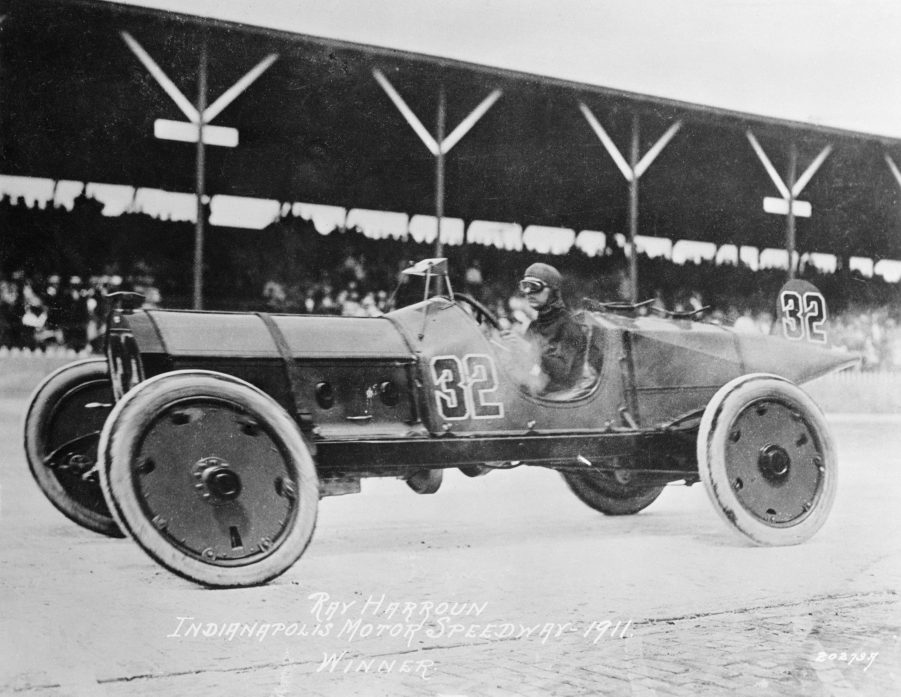
Automotive Technologies First Used On Race Cars
Motorsport is an excellent opportunity for teams to rapidly develop new technologies. That competitive environment rewards engineering advancements and innovation with podium finishes, which speeds up R&D. But sometimes those technologies wind up in road cars, and the equipment we take for granted now was, at one point, revolutionary. These particular innovations, however, were brought into the public eye by race cars.

Disc brakes on the Jaguar C-Type
If you’re going to fling a car around a track at over 100mph, you’d better know how to stop. That’s why the rapid development of brakes for track use makes sense. In 1953, Jaguar brought a C-Type fitted with disc brakes to the 24 Hours of LeMans, snagging 1st place thanks to their new innovation. But even though most race cars implemented disc brakes very soon after, they weren’t exactly new.
Disc brakes were first patented in 1902 and used throughout that 51 year gap as brakes for airplanes. With much higher speeds and much harsher environments, disc brakes made sense. But Jaguar’s win proved to the masses that disc brakes weren’t just for the skies.
All-Wheel-Drive on the Audi Quattro

Another automotive technology that wasn’t created specifically for race-cars, AWD systems were used solely by off-road and military vehicles. The FIA made 4-Wheel Drive legal for race and rally cars in 1979, but back then, the systems were heavy. It’d increase the car’s weight and reduce speed, so nobody used them at first. But when Audi stuffed the Quattro with AWD and brought it to a rally stage in 1980, they dominated the FWD and RWD competition. This lead other teams teams to implement the tech almost instantly in order to keep up.
Not only did the Quattro revolutionize AWD, it restructured rally events altogether. Because of the sudden jump in grip and power led to the formation of Group B in 1982, the most dangerous class of rally cars in the sport. Fast, maneuverable, and deadly. Cars could have over 500 horsepower, accelerate to 60 in under three second on dirt, but that made crashes all the more deadly. It was phased out by 1986 after more crashes killed more drivers and spectators.
Rear view mirror on the Marmon Wasp

Unlike the past two pieces of equipment, rear view mirrors were designed specifically for race cars. Well, it was designed for one race car in the very first Indianapolis 500 back in 1911. The typical strategy was to stuff two men into a car, one driver and one race mechanic. One of the race mechanic’s jobs was to look behind the car and shout to the driver if other racers were behind them.
39 of the 40 race cars had two people in them. It was Ray Harroun who sat all by himself, equipped with a 3 by 8 inch mirror on the front. People were concerned that the lack of a race mechanic would cause a pile up, but Harroun got the green light anyways. The New York Times explains that the lack of a second operator shaved 100+ lbs off the car’s total weight, and the front mounted mirror added downforce, giving Ray the leg up to win the whole race. One can only imagine how many other teams facepalmed themselves after not thinking of something so simple.
Nowadays, every car rolled off the assembly line is fitted with rear view mirrors and disc brakes. And AWD cars are abundant as ever. But race cars are still evolving, and the technology they use will impact what we drive in the future. Formula E, for instance, is the newest motorsport sparking progress for electric cars. As long as there’s competition, there will be innovation. No team wants to fall behind, and if inventing the next big thing puts them ahead of the pack, they’ll do it by any means necessary.


